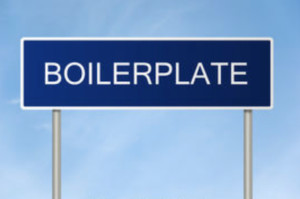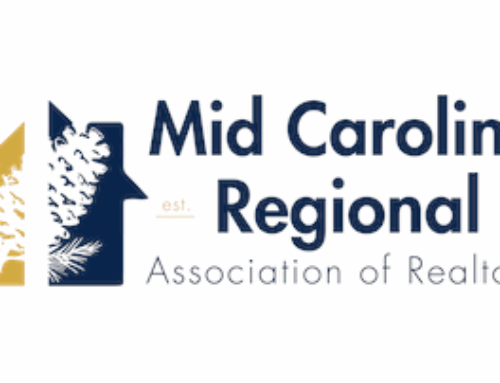 Companies spend a lot of time and money focusing on their Elevator Pitch. As a PR professional, I can appreciate that and endorse the value of a key, succinct messaging to describe your company. My guess is so much focus has been placed on a strong Elevator Pitch because it’s highly valued when a firm is out raising capital. I just wished more folks paid attention to their boilerplates.
Companies spend a lot of time and money focusing on their Elevator Pitch. As a PR professional, I can appreciate that and endorse the value of a key, succinct messaging to describe your company. My guess is so much focus has been placed on a strong Elevator Pitch because it’s highly valued when a firm is out raising capital. I just wished more folks paid attention to their boilerplates.
What’s a Boilerplate?
A boilerplate is the “About” description you find for an organization at the end of their news releases. Like an Elevator Pitch, it is a company’s best chance to describe themselves because it will leave a consistent digital footprint of who they are. The words a company uses in a boilerplate are essential, but so is what a boilerplate contains.
The biggest mistake most companies make with a boilerplate? They oversell and put everything in their boilerplate but the kitchen sink. Fortunately, there are some best practices for boilerplates. Lately, I have been working with both new clients and existing clients to hone their boilerplates to make sure they match these best practices.
What Makes a Great Boilerplate?
Every boilerplate should have some core components. The best way to see if your current company boilerplate addresses each of these core components is to ask these seven crucial questions:
- What do you do (or are known for)?
- Who is your customer or audience?
- What makes you important?
- What is your competitive differentiator?
- What keywords or positioning phrase is crucial to include?
- What is your call to action?
- Is it, ideally, 100 words or fewer?
These are the PR industry’s current best practices for boilerplates, and like any set of “rules” or guidelines, there are always exceptions. It’s challenging for a company that is a conglomerate with multiple lines of business that play in different business verticals and serve a wide variety of different audiences to craft a 100-word boilerplate. I’m not saying it can’t be done; it’s just not that easy.
A Stellar Boilerplate
The example I often share with clients to illustrate an example of a great Corporate boilerplate doesn’t come from a real estate company, but it does come from a technology firm: Apple. Here is Apple’s boilerplate from a recent news release, which for me, absolutely nails what a boilerplate should be:
“Apple revolutionized personal technology with the introduction of the Macintosh in 1984. Today, Apple leads the world in innovation with iPhone, iPad, Mac, Apple Watch and Apple TV. Apple’s four software platforms — iOS, macOS, watchOS and tvOS — provide seamless experiences across all Apple devices and empower people with breakthrough services including the App Store, Apple Music, Apple Pay and iCloud. Apple’s more than 100,000 employees are dedicated to making the best products on earth, and to leaving the world better than we found it.”
It is 84-words total, and their news release includes below the only thing I believe that’s missing – a call to action – but it includes a link to the company’s Newsroom on its website for reporters below this description, as well as press contact information.
Walmart, which is ranked as the #1 company in the world by revenue (a half-trillion dollars), also nails it’s 98-word boilerplate:
“Walmart Inc. (NYSE: WMT) helps people around the world save money and live better – anytime and anywhere – in retail stores, online, and through their mobile devices. Each week, nearly 265 million customers and members visit our more than 11,200 stores under 55 banners in 27 countries and eCommerce websites. With fiscal year 2018 revenue of $500.3 billion, Walmart employs over 2.2 million associates worldwide. Walmart continues to be a leader in sustainability, corporate philanthropy and employment opportunity. Additional information about Walmart can be found by visiting http://corporate.walmart.com, on Facebook at http://facebook.com/walmart and on Twitter at http://twitter.com/walmart.”
Working On Your Boilerplate
One of the things we do for most PR clients is a full Media Audit of their news coverage. We performed a deep dive and compared how they stack up against their competition. We use the world’s largest media platform to do this, and that gives us access to 1.6 million searchable records and nearly a half-million media contacts. We can do a look back up to 18 months on news coverage, allowing us to compare apples-to-apples. We look at the words competitors use in their PR and other communications material. We also break down their boilerplates, compare word choices, messaging goals and targeted audiences.
Few real estate firms have boilerplates we have analyzed over the last several years that score higher than a B-minus on their boilerplates; most get a failing grade. That means most real estate and tech firms today should take a fresh look at their boilerplates and apply the best practices guidelines. The most important thing to remember: less is more.
While I wouldn’t give McDonald’s a Gold Star for including all the things a boilerplate should have when your brand is as iconic as theirs, you don’t have to explain as much, and they take that to heart with this 35-word boilerplate:
McDonald’s is the world’s leading global foodservice retailer with over 37,000 locations in 120 markets around the world. Over 90 percent of McDonald’s restaurants worldwide are owned and operated by independent local businessmen and women.
Maintaining Your Boilerplate
Even real estate and tech firm that has come close to nailing their boilerplates need to take a fresh look at their boilerplates periodically. Because businesses are changing and evolving, so should a firm’s boilerplate. It must accurately describe who you are as a company today. If not, you need to make the appropriate modifications.
But remember, a boilerplate also is what helps establish your brand and your core messaging. It needs to be repeated over and over and over again to have any impact or effect. One client I audited changed its boilerplate almost as frequently as people change the month on their wall calendar: they had over 21 different boilerplates in three years.
While boilerplates do need to evolve as your business changes, they also need to be consistent. Once you perfect one, leave it alone and give it time to resonate with your audiences.



